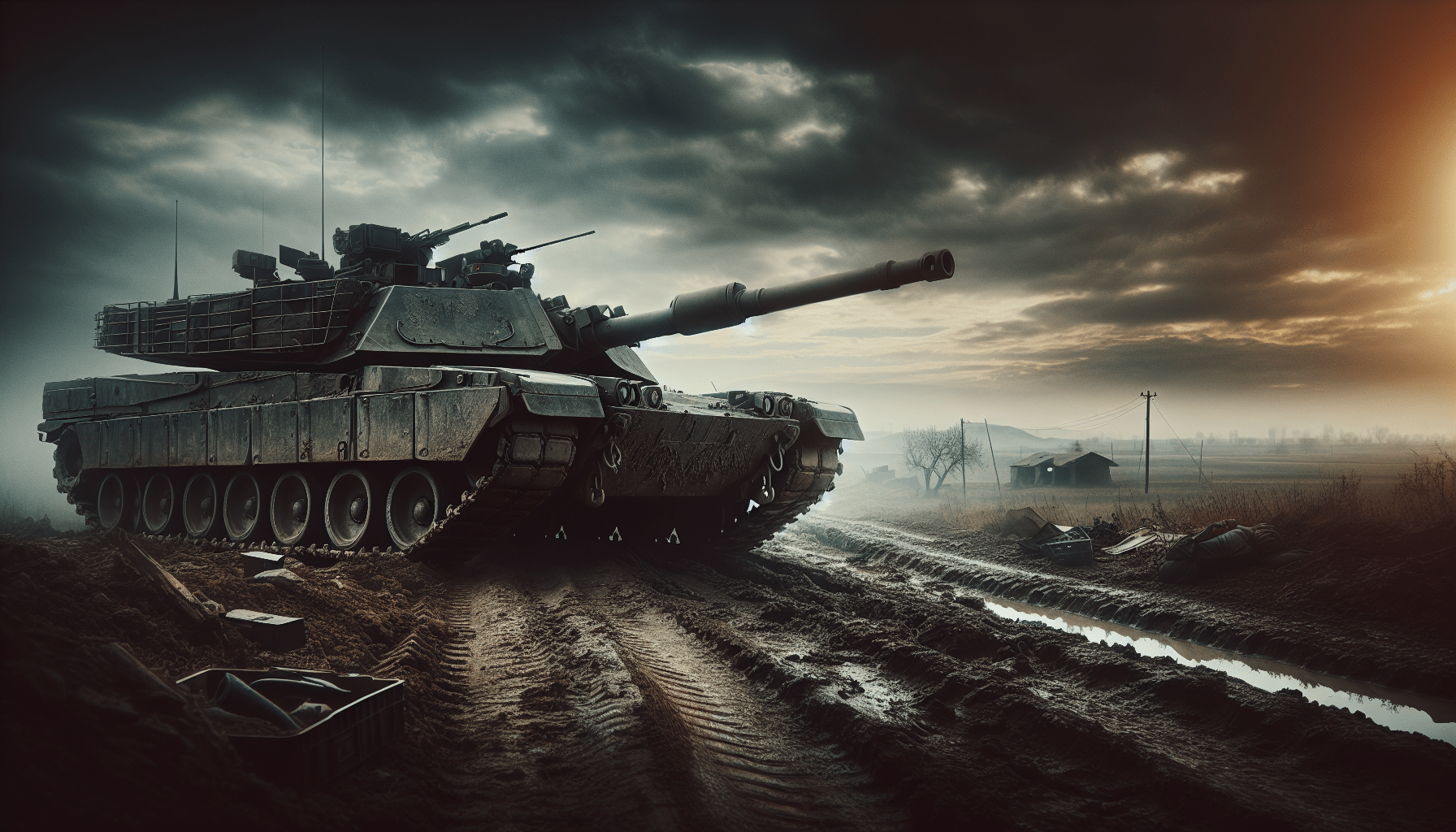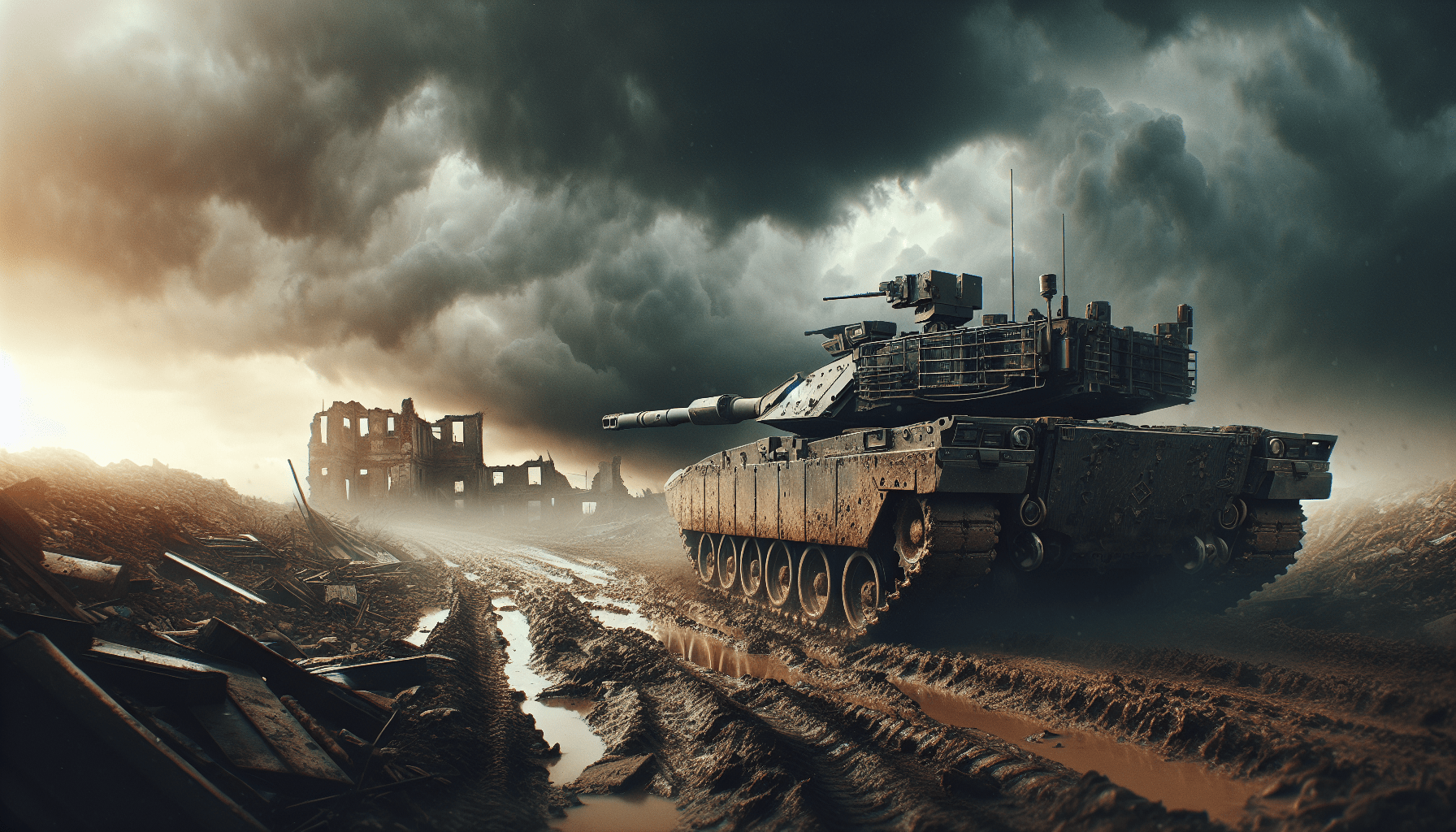On May 10, Russian forces initiated a ground offensive in the northern Kharkiv region, marking the emergence of a new front in the ongoing conflict with Ukraine. This article explores the strategic implications of the assault, examining whether it serves as a diversionary tactic or signals a genuine attempt to seize the central city of Kharkiv. Furthermore, the analysis delves into Ukraine’s potential responses, particularly in light of recent troop movements and the allocation of resources amidst concurrent military engagements.
The significance of this offensive is underscored by the historical context and strategic positioning of Kharkiv, Ukraine’s second-largest city. Reports indicate Russia has concentrated a substantial troop presence along the northern border, with claims of capturing contested villages met with Ukrainian counterattacks. As both sides gauge the evolving battlefield dynamics, critical decisions regarding troop reinforcements and operational strategies must be made, shaping the course of the conflict in the region.
Overview of the Assault
Date and Origin of the Assault
On May 10, 2023, Russian military forces instigated a ground assault on Ukraine, targeting the northern Kharkiv region. This marked a significant escalation within the drawn-out conflict and opened a new front in ongoing hostilities between the two nations. The timing of the assault coincided with previous U.S. intelligence reports indicating a substantial Russian troop buildup in the vicinity, thereby underscoring the premeditated nature of these military actions.
Scale of Operations
Reports suggest that Russian forces amassed between 35,000 to 50,000 troops in northern Kharkiv prior to the assault, initiating a complex operational objective. The scale of mobilization indicates a strategic attempt not merely to probe defenses but to make significant territorial gains. This formidable troop presence suggested that Russia was ready to engage in a sustained military campaign with the potential to capture critical urban centers.
Opening of a New Front
The assault on Kharkiv represented a pivotal shift in the operational dynamics of the conflict. It functioned not only as an offensive maneuver but as a means to distract or divert Ukrainian military resources from other battlefronts, especially the Donbas region. By opening a new front, Russia sought to exert pressure on Ukraine’s military infrastructure while exploring vulnerabilities in its defensive postures.
Russian Military Strategy
Intent Behind the Assault
The objectives of the Russian assault were multifaceted. The most evident intent appeared to be the capture of Kharkiv, Ukraine’s second-largest city, which holds strategic importance due to its proximity to the Russian border. Alternatively, the assault could function as a diversion tactic, aimed at stretching Ukrainian resources thin across multiple fronts.
Troop Buildup Prior to the Attack
The successful execution of this assault could only be achieved due to the extensive troop buildup Russia conducted over the weeks leading up to May 10. The reinforcement of northern operations involved repositioning units from other fronts, notably Zaporizhia, which indicates a calculated strategy to concentrate their military capabilities in a critical area.
Concealment of Military Movements
In preparation for the assault, Russian military leadership employed various tactics to obfuscate their true intentions. Reports indicated that troops were deliberately withdrawn from frontline positions under the guise of rest and resupply. Such movements were orchestrated to disguise the extent of their operational preparations from Ukrainian surveillance, thus providing a tactical advantage for the surprise assault.
Ukrainian Response and Strategy

Anticipation of the Offensive
Advance warning existed regarding potential Russian maneuvers in the Kharkiv region. Ukrainian military intelligence had been monitoring the situation and anticipated that an offensive may coincide with a broader summer strategy, potentially including renewed efforts to seize the city of Sumy. This foresight, however, prompted serious questions regarding the adequacy of Ukrainian defenses in Kharkiv.
Countermeasures in Place
In light of the anticipated offensive, Ukrainian forces implemented a series of countermeasures designed to bolster their defenses. These included the mobilization of reserves and the strategic repositioning of assets to react against the Russian advance. The efficacy of these countermeasures in curtailing Russian gains remained a crucial and uncertain element in the unfolding conflict.
Reinforcement Decisions
The decision-making process concerning reinforcements became critical for Ukraine’s ability to maintain its operational integrity. Military leadership was tasked with balancing the allocation of resources between the Kharkiv front and ongoing operations in the Donbas region. The potential need to redirect military assets raised significant concerns about the stability of defenses across all fronts.
Strategic Importance of Kharkiv
Historical Context
Kharkiv’s geopolitical significance is rooted in its historical ties and political demography. Positioned close to the Russian border, it has experienced the ebb and flow of military engagement throughout the conflict. The city is not merely a cultural hub; it also serves as a strategic linchpin in the broader context of Ukraine’s territorial integrity.
Geopolitical Significance
The current conflict has underscored Kharkiv’s role as a focal point in the geopolitical tussle between Ukraine and Russia. In addition to its symbolic value, control over Kharkiv could enable further incursions into Ukraine’s territory, posing a direct threat to the capital, Kyiv. As such, its defense has considerable implications not limited solely to military engagement but extending into realms of national sovereignty and international relations.
Buffer Zone Objectives
Russia’s strategic aspirations include the establishment of a buffer zone within Ukrainian territory to mitigate potential threats from cross-border attacks. The notion of creating a “sanitary zone” elucidates the Kremlin’s enduring concerns over security and territorial integrity. This buffer, if established, could create a contested area that complicates the ability for Ukrainian forces to operate freely near the border.
Casualties and Humanitarian Impacts

Civilian Evacuations
As fighting intensified, over 6,000 civilians had to evacuate from conflict zones, seeking safety from the rising violence and military confrontations. The mass movement of civilians not only illustrated the immediate humanitarian crisis but also reflected a sense of urgency among local populations to escape the escalating threat of attacks.
Impact on Local Populations
The civilian population in affected regions has been subjected to severe disruption due to military operations. Access to basic amenities, such as electricity and water, has been compromised, leading to a humanitarian emergency. The psychological toll on civilians, compounded by the threat of violence, has created an atmosphere of fear and uncertainty.
Casualty Figures and Reports
Casualty figures and reports from the frontline have varied, with both sides contesting narratives regarding the extent of losses. Accurate assessment of casualties poses a challenge in the fog of war, yet the ongoing conflict has indisputably resulted in significant human suffering, with local communities bearing the brunt of the consequences.
Reports of Territorial Gains
Russian Claims of Village Captures
In the aftermath of the offensive, Russia asserted that it had successfully captured five villages along the contested periphery of Kharkiv. These claims, however, have been disputed by Ukrainian forces, who argue that they are successfully launching counterattacks to regain lost ground. The contestation of territorial claims adds to the complexities surrounding the operational realities on the ground.
Ukrainian Counterattacks
Responding to Russian advances, Ukrainian forces have initiated counterattacks aimed at reclaiming lost terrain. The effectiveness of these countermeasures is pivotal in determining whether Ukraine can stabilize the situation or if it will suffer further losses in territory and morale.
Verification of Claims
The verification of territorial claims amidst the chaos of ongoing conflict remains a monumental task. News and reports from the frontlines can be fraught with misinformation, necessitating rigorous fact-checking to discern the realities of the situation. The dynamic nature of the battlefront complicates the reliability of any claim made by either side.
Defensive Tactics and Military Technology

Setting Up Defensive Lines
In anticipation of the assault, Ukrainian forces have been engaged in establishing defensive lines to fortify their positions. However, the efficiency and sufficiency of these defensive lines in preemptively countering the Russian advance were brought into question as the offensive unfolded.
Technological Adaptations by Both Sides
Both Ukrainian and Russian forces have made significant adaptations in their military technologies and tactics in response to evolving battlefield dynamics. This includes the enhancement of artillery capabilities and the deployment of advanced reconnaissance tools that shift the nature of engagements and strategic planning.
Use of Drones and Advanced Artillery
The utilization of drones and advanced artillery has become increasingly prevalent in modern warfare, significantly impacting the battlefield landscape. Both sides leverage these technologies to improve situational awareness and strike capabilities, further reshaping the nature of the conflict.
Resource Allocation and Military Aid
Impact of U.S. Military Aid
The influx of U.S. military aid has potential ramifications for the current conflict, particularly in the context of ongoing Russian operations. The timely arrival of military resources can bolster Ukrainian defenses, improving their ability to confront Russian advances effectively.
Resource Dynamics in Kharkiv vs. Donbas
As the situation evolves, the dynamics of resource allocation between Kharkiv and Donbas become increasingly critical. The decision to divert resources toward Kharkiv, given the new threats posed by Russian offensives, may impact defensive operations in the historically contested Donbas region.
Strategic Decision Making
Strategic decision-making becomes paramount in determining the direction of military resources. The necessity to allocate assets effectively could potentially shape the outcome of the current operations and influence longer-term military strategies for both sides in the ongoing conflict.
Misinformation and Media Coverage
Role of AI in Information Warfare
The utilization of artificial intelligence in the dissemination of information has emerged as a noteworthy aspect of contemporary warfare. Misinformation campaigns, whether generated by AI or human operators, complicate the narrative surrounding the conflict, necessitating critical scrutiny from both analysts and the general public.
Challenges of Reporting on the Conflict
Journalists and media organizations face significant challenges when attempting to report on the developments of the conflict accurately. The fluid nature of warfare, coupled with the potential for misinformation, can lead to conflicting reports, requiring nuanced interpretations of the information presented.
Public Perception and Misinformation
The dissemination of narratives surrounding the conflict significantly impacts public perception and sentiment. The blurring of truth and misinformation can distort the understanding of military operations, further complicating international responses and fueling tensions.
Conclusion
Summary of Key Points
The Russian assault on the northern Kharkiv region has introduced a new layer of complexity to the ongoing conflict, highlighting both the strategic importance of the region and the operational dynamics at play. The interplay between military strategy, resource allocation, and information warfare shapes the responders’ actions on both sides.
Future of the Kharkiv Offensive
As hostilities continue, the future of the Kharkiv offensive will depend on the effectiveness of countermeasures employed by Ukrainian forces and the tactical calculus of Russian military planners. The evolving nature of the frontlines indicates that further developments are likely.
Impact on the Overall Conflict
Overall, the shifts witnessed in the Kharkiv region extends beyond local territorial engagements, implicating broader geopolitical considerations. The evolving situation will resonate within the context of international relations, impacting both regional stability and the potential for negotiated resolutions to the prolonged conflict.
